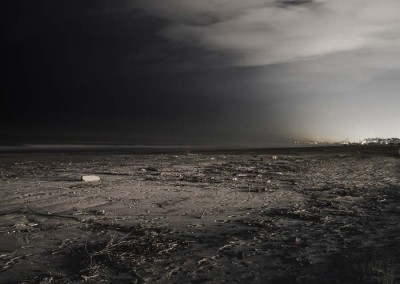-

The skeletal reconstruction of dead specimens is carried out for educational purposes, for the study of turtle anatomy and for museum enhancement.
-

Trawling is a specific fishing technique, which involves two boats towing a net on the seabed. This technique has a devastating impact on the environment, as the nets grab fishes, seaweed, mollusks, coral and anything which is found on the seabed. Often environmentalists try to counter the damages produced by this technique, and they attempt to reconstruct the original habitat on the seabed, though it is a lengthy operation. As for the Caretta caretta, adult specimen can stay in apnea for up to three hours. They usually search for food on the seabed, and very often they find themselves trapped in the nets. If caught a turtle can be dragged for 4-5 hours by the net. Many of these specimens arrive at the rescue center in desperate conditions.
-

As a consequence of property speculation, concrete buildings are becoming a recurrent presence along the coasts.
-

-

Sergio, Maritime Biologist, voluntary.
-

Often fishermen find turtles caught in their nets. Thankfully, the fishermen collaborate with the voluntaries, and contact them when this happens.
-

-

Chiara, Veterinarian, voluntary
-

When volunteers rescue a turtle they often find it covered with seaweed and barnacles. As a very first step in their intervention, they meticulous clean the specimes.
-

With specific interventions, the volunteers manage to save hundreds specimen every year. After some rehabilitation, which can last up to six months, turtles are released into the sea.
-

In 1775, Jean-Baptiste de La Chapelle invented the scarf, which was the first equipment that allowed man to explore the seabed.
-

Caretta caretta can live up to 80 years in their original habitat. They become fertile when they reach around 25-30 years of age. These animals have an impressive memory. The female come back to the sites where they were born to lay their eggs. Light pollution has a tremendous effect on this dynamic. Just imagine being a tiny new born turtle. As soon as you come out of the egg, you can barely find the direction of the sea in the dark. Usually new born turtles use the light of the moon and of the stars to find the direction of the sea, as they follow the gleam reflected on the water. Street lights can be very disorienting, preventing the new born turtles from finding the sea.

